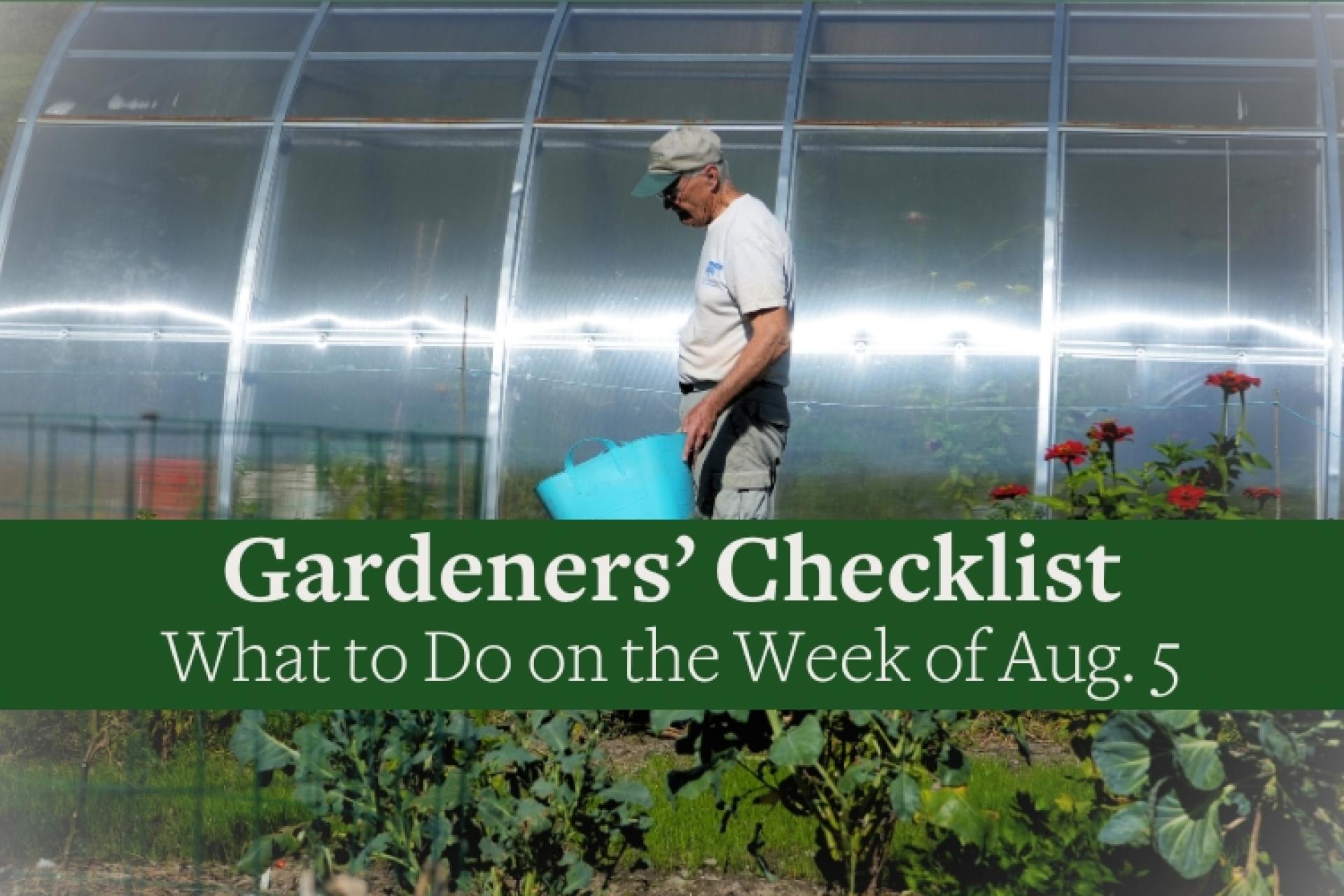You are here
Gardeners Checklist: Here Is What to Do on the Week of Aug. 5
Gardeners Checklist: Here Is What to Do on the Week of Aug. 5
Gardener’s Checklist
By Ron Kujawski
* Harvest summer squash while the fruit are still in the baby stage, about four inches long for zucchini and yellow squash, and two inches in diameter for patty pan squash. While you’re at it, pick a few squash flowers just as they are about to open. Stuff the blossoms with a mixture of cheese and herbs, dip the flowers in batter and fry in oil. Detailed recipes can be found on the internet or in comprehensive cookbooks such as "The Joy of Cooking."
* Pinch off new blossoms on pumpkins and winter squash. This will encourage faster development and larger size of the existing fruit on the plants. It’s not likely that many, if any, of the fruit developing from new blossoms now will mature before hard freezes this fall.
* Dig up some leeks and a few potatoes for leek and potato soup. Leeks can be left in the ground through fall and harvested as needed.
* Remove clusters of faded flowers from garden phlox before mature, viable seeds drop to the ground. Phlox seedlings developing from these seeds typically revert to pale magenta. To keep your plants the color you chose initially, it's important to deadhead. Some newer phlox cultivars are sterile, but even then, deadheading is a good idea because it results in more attractive plants.
* Dig, divide, and transplant overcrowded irises. After digging up a clump of iris, hose off the soil from the rhizomes and then cut the branched rhizomes into three or four sections. Cut away any soft or decayed parts of the rhizomes.
* Check for hidden nest of wasps and hornets before trimming hedges and shrubs. Take a broom handle and tap the plants, but get ready to run. These stinging critters tend to get more aggressive as the summer wears on; perhaps they know they’ll perish when cold weather arrives. Other favorite places for wasp nests are rock walls and wood piles.
*
Here we are at the peak of the harvest season. Yet, my mind, like snow, is drifting — drifting to thoughts of winter. No, my brain has not been fried by summer heat. In fact, it is the harvest itself that makes me think of winter. Our daily meals now consist largely of garden-grown vegetables enhanced by the addition of fresh herbs. We’ll continue to eat these vegetables through winter but they’ll be ones we’ve canned, frozen or dehydrated. Though we also preserve many herbs for winter use – by drying or freezing – the flavor of preserved vegetables is much improved with some fresh herbs. However, to have fresh herbs in winter requires some planning. A good place to begin is by rooting cuttings from sage and potting these. If you don’t have a pot of rosemary, find a friend who does and take cuttings now. This is also a good time to start seeds of basil, parsley, thyme, sweet marjoram, and dill in pots for growing on windowsills this winter. So, wipe the sweat from your brow and think of winter, winter grown herbs, that is.
Ron Kujawski began gardening at an early age on his family's onion farm in upstate New York. Although now retired, he spent most of his career teaching at the UMass Extension Service. He serves on Berkshire Botanical Garden’s Horticulture Advisory Committee. His book, Week-by-Week Vegetable Gardener’s Handbook, is available here.
Help Our Garden Grow!
Your donation helps us to educate and inspire visitors of all ages on the art and science of gardening and the preservation of our environment.
All Donations are 100 percent tax deductible.


